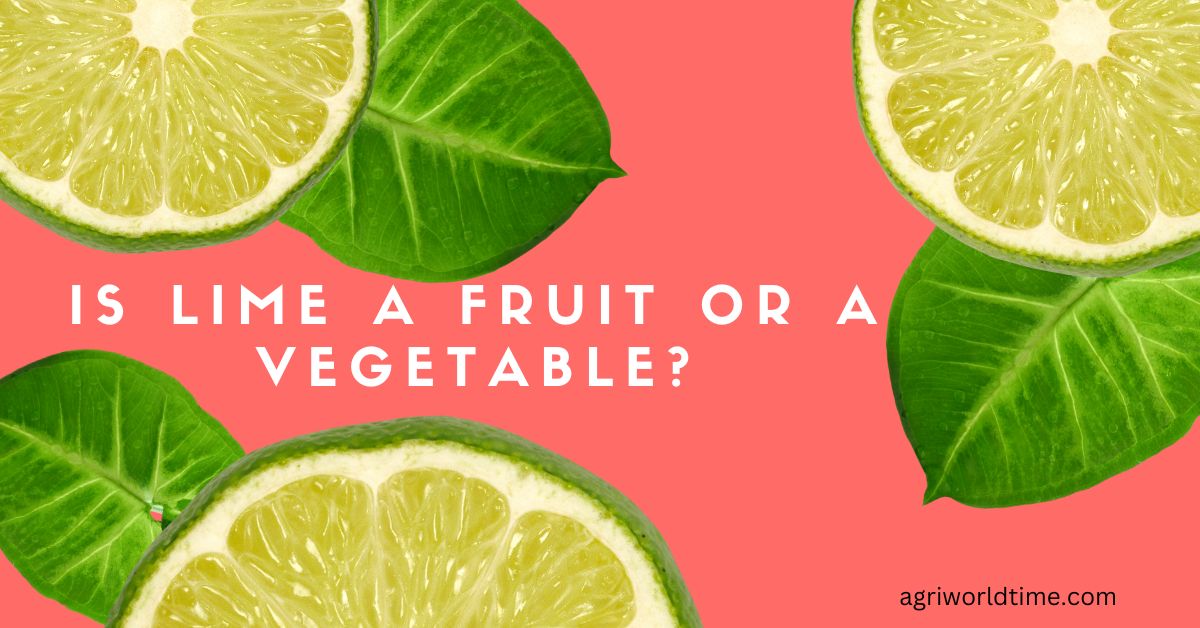In the world of culinary diversity, few questions can spark a debate as spirited as the classification of lime. Is it a fruit, or is it a vegetable? The answer may seem straightforward, but when you delve deeper into the intricacies of botanical definitions and culinary usage, things become surprisingly complex.
History of Lime
Wild limes likely originated in Asia and spread through trade. Crusaders introduced them to the Mediterranean in the 12th century. Christopher Columbus brought citrus seeds, including limes, to the West Indies in 1493. Limes contain vitamin C and were used to prevent scurvy, earning sailors the nickname “limey.”
Unraveling the Botanical Mystery
Lime: The Fruit Perspective
From a botanical standpoint, limes are unequivocally fruits. They belong to the Rutaceae family, which encompasses various citrus fruits like oranges, lemons, and grapefruits. Limes, with their vibrant green color and tangy flavor, share these characteristics with their citrus cousins.
In the botanical world, fruits are typically defined as the mature ovaries of flowering plants containing seeds for reproduction. Limes undeniably fit this description. They develop from the ovary of the lime tree’s flower and contain seeds, although the majority of the limes found in grocery stores are seedless varieties.

Lime: The Vegetable Perspective
But wait, some might argue that limes are vegetables based on their culinary use. In certain cuisines, especially in South and Southeast Asia, limes are employed as a savory ingredient rather than a sweet, juicy fruit. Lime leaves, zest, and juice are used to add a distinctive and zesty flavor to dishes. This departure from the traditional sweet fruit application can lead to confusion.
Culinary Versatility: A Twist in the Tale
One of the reasons behind the confusion surrounding limes’ classification is their exceptional versatility in the culinary world. Limes can be both sweet and savory, making them a unique ingredient with a dual identity.
Limes as Fruits
Citrus Sweets: Limes are widely known for their use in desserts and beverages. Key lime pie, a delectable dessert with a sweet and tangy lime filling, is a perfect example of limes as fruits. Additionally, limeade and lime-infused sorbets are popular summertime treats.
Refreshing Drinks: Limes are frequently used to enhance the flavor of beverages, such as mojitos and margaritas, offering a burst of citrusy freshness.
Limes as Vegetables
Savory Delights: In savory cooking, lime leaves and zest are used to add a burst of citrusy flavor to dishes. Thai cuisine, for instance, relies heavily on kaffir lime leaves to impart a unique fragrance to curries and soups.
Condiment and Garnish:
Lime juice often doubles as a condiment, enhancing the taste of savory dishes and serving as a garnish for a final touch of acidity.
Conclusion:
In the grand culinary spectrum, limes transcend the boundaries of fruit and vegetable. Their dual nature allows them to shine in a myriad of dishes, whether sweet or savory. While their botanical classification as fruits remains indisputable, their ability to play diverse roles in the kitchen blurs the lines between fruit and vegetable.
In essence, the debate over whether lime is a fruit or vegetable is a testament to its culinary prowess. Limes defy categorization, and perhaps that’s what makes them truly extraordinary.
So, the next time you enjoy a zesty lime-infused dessert or savor the tangy goodness of a lime-infused curry, remember that this versatile citrus gem doesn’t conform to conventional definitions. It thrives in both the sweet and savory realms, making it a cherished ingredient in kitchens around the world.
FAQs
Is lime a fruit or a vegetable from a botanical perspective?
From a botanical standpoint, lime is unequivocally classified as a fruit. It belongs to the Rutaceae family, which includes various citrus fruits like oranges and lemons. Limes develop from the ovary of the lime tree’s flower and contain seeds (although most commercial varieties are seedless).
Why do some people consider limes as vegetables?
The confusion arises from the culinary use of limes in some cuisines, particularly in South and Southeast Asia. In these regions, limes are used for their zest, leaves, and juice to add a savory and citrusy flavor to dishes. This usage as a savory ingredient can lead to the misconception that limes are vegetables.
What are some examples of limes being used as vegetables in cooking?
In savory cooking, lime leaves and zest are used to enhance the flavor of dishes, particularly in Thai cuisine. Lime juice also serves as a condiment and garnish for various savory dishes, adding acidity and freshness.
What makes limes unique in terms of their culinary versatility?
Limes stand out due to their ability to seamlessly transition between sweet and savory applications. Their zesty, citrusy flavor makes them a valuable ingredient in both dessert and savory dishes, making them exceptionally versatile in the culinary world.
Are there any health benefits associated with consuming limes?
Yes, limes are a good source of vitamin C and antioxidants. They can boost your immune system, improve skin health, and aid digestion. Additionally, the acidity of limes can help balance the flavors in dishes.
Can I use limes interchangeably with lemons in recipes?
Limes and lemons have similar acidity levels but offer slightly different flavor profiles. While they can often be used interchangeably, keep in mind that limes have a slightly sweeter and more intense flavor compared to lemons. Adjust the quantity to achieve the desired taste in your recipes.

